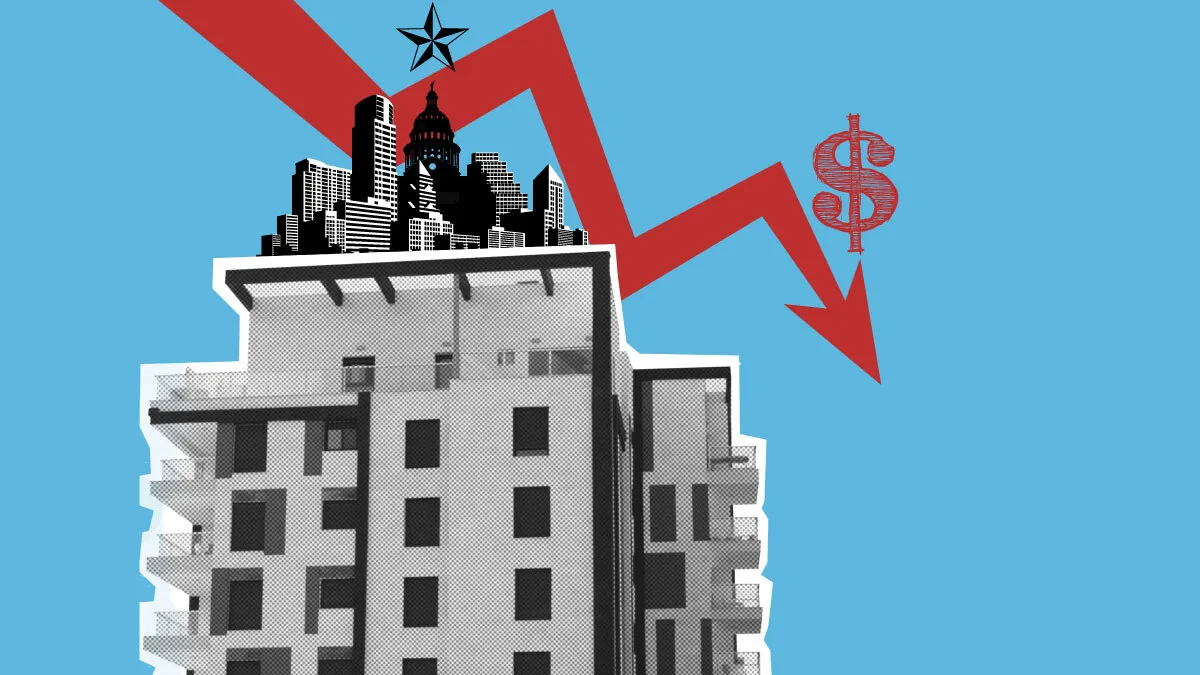Some say Austin’s rental market could collapse. That is not the reality

In January 2017, Altos recorded an average apartment rent in the city of $1,265. And even in January 2020, just before the pandemic, average apartment rents were $1,400. By January 2022, they had risen to $1,612.
The easing of the pandemic in 2021 brought a increase in demand for rental properties in Austin, where the vacancy rate fell from 7.8% in January to 3.9% in September. As demand rose, so did rental prices, rising from $1,289 at the start of 2021 to a peak of $1,725 in August 2022, according to data from Apartment list.
Yet the rental market is adapting. Knapp notes that Austin saw an increase in active listings in the first half of 2024, giving renters more options. “The sheer amount of additional supply on the market has really given buyers an advantage,” she said.
“I would just say that the rental market is still performing a little bit stronger than the housing or purchase market,” Knapp added. “But you know, we’ve seen signs in recent months that things are slowing down. That is also a factor of higher inventory.”
Knapp said that while the market is finding a new normal, she doesn’t think there have been “changes in a meaningful way” that would indicate doom and gloom.
Function of oversupply
Bryan Lawrence, senior vice president of consulting at John Burns Research and advice (JBREC) said the company rates the Austin market as sluggish – a result of the influx of new supply entering the market in recent years.
“Austin saw nearly 25,000 new apartment units completed over a twelve-month period in the second quarter of this year, representing 7.9% of existing supply, with an additional 38,000 apartment units under construction (12.2% of existing offer). delivered in the coming months,” Lawrence wrote.
JBREC predicts that rental activity will decline rather than see huge ebbs and flows, Lawrence added.
“Year-on-year, apartment rental prices have fallen 7.5% year-on-year from October 2024 (-14% from peak). We believe that continued high rates (including financing rates) will delay a near-term recovery in construction activity,” he wrote. “JBREC does not forecast meaningful rental growth until 2026 and beyond, which will make it more difficult for new project developments.”
Carl Whitaker, director of research and analytics at RealPagesaid the period of oversupply will be a short-lived phenomenon.
“If we take 2017 and 2018 as normal levels, supply should look normal by 2027 and 2028, so I think market fundamentals will start to change quite quickly. And in four years we can talk about a market environment where we ask ourselves, ‘Are we delivering enough housing?’ again. And I think that’s a very real consideration,” Whitaker mused. “I think we can talk about an environment in which the housing shortage plays a role again.
Saying the market is collapsing could be an over-characterization of what is happening, Whitaker added.
“Really, what we’re seeing is that Austin is a great example of where you have more than enough supply to meet demand,” he said. “And demand in this market is actually still quite robust. … We’re seeing prices adjust faster in Austin than anywhere else in the country.
“So from that perspective I think it’s fair to say there has been a tangible decline in rental levels. But to say it’s collapsing, I think, might be a little bit unfair because it’s still strong.”
Whitaker said data should drive the story of Austin’s rental market. For example, occupancy data shows that Austin has an occupancy rate of 92.5% – one of the lowest numbers RealPage has recorded since 2010.
“You do have a kind of point of comparison there, when you emerge from the great financial crisis [was the] The last time Austin saw this many vacancies on the market,” he said. “But again, from that same perspective, occupancy is up about 10 to 20 basis points since the beginning of the year, and vacancy is down about 10 to 20 basis points.
“So it’s not necessarily ‘normalizing’ relative to a long-term average, but it is normalizing relative to where it started the year.”
A better way to describe Austin’s market is “stabilizing,” Whitaker said. He noted that Austin saw a large influx of job-motivated movers after the pandemic, which worsened the housing market at the time and caused employment in the city to skyrocket.
“If you draw a trend line from 2019 to today, today’s numbers are essentially where the market would otherwise have been in 2019 if supply and demand had continued, if the pre-pandemic growth rate had continued,” he said.
“It’s at the same level, but it just feels like a jarring adjustment from where it was in 2021 to 2022. … This is not unique to Austin. This is something we see in many other markets.”




